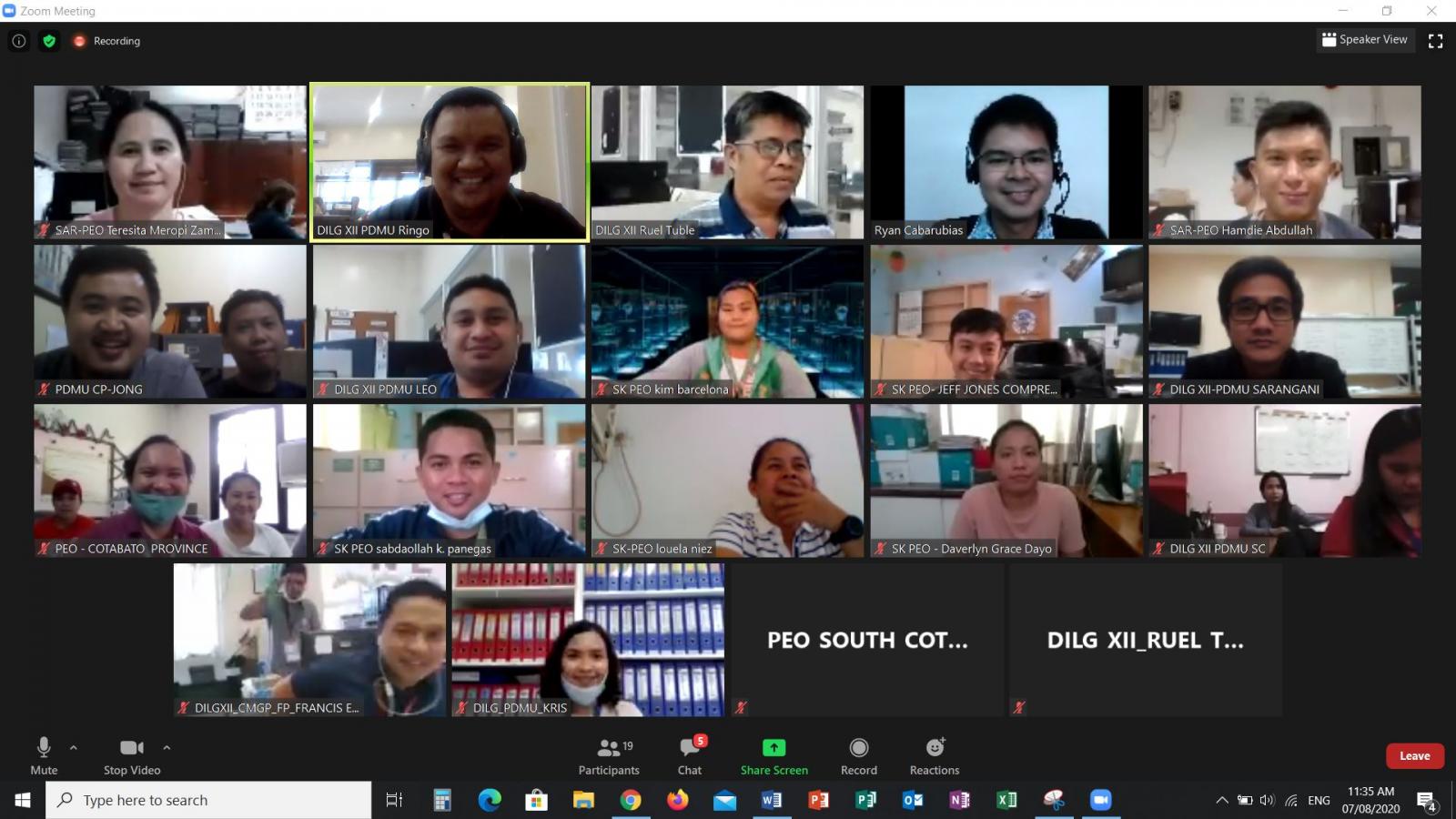


A four-day virtual training was facilitated by the Department of the Interior and Local Government XII for provincial engineers and development planners, as support to the provincial governments’ efforts to ensure safer roads in the region.
On August 11 to 14, the Department’s Project Development Management Unit (PDMU) hosted the Road Safety Audit virtual training in partnership with the Department of Public Works and Highways (DPWH) Central Office. A total of 32 provincial engineers and planners from the provinces of South Cotabato, Cotabato, Sultan Kudarat, and Sarangani participated in the said training.
The Department targets to strengthen the provincial government’s knowledge and capacity in analysing and preventing road crashes as they plan and construct local road projects, including those funded under the national government’s Conditional Matching Grant to provinces (CMGP).
DILG XII Regional Director Josephine Cabrido-Leysa, CESO III said, the training will help provincial governments construct safer, quality roads “with the end goal of minimizing accidents”.
About 7, 000 Filipinos die due to road crashes annually with motorcycles making up the biggest fraction among vehicles involved with at least 6, 000 cases each year from 2011 to 2013, followed by cars, vans, rigid trucks, tricycles, and jeepneys.
DPWH further explained, high speed, lack of advance curve warning, and no pedestrian advance warning and regulatory signs were among the top three reasons of crashes in the country, based on the agency’s 2019 Accident Blackspot Investigation (ABI) nationwide report.
In Region XII, more than 5, 000 reported road crashes were recorded in 2016 to 2018, putting the region in the ninth spot with the highest cases of road crashes nationwide, according to the Philippine National Police’s (PNP) e-blotter.
In 2019, the region also ranked eighth with the highest number of identified road blackspots of 149, Engr. Kristine Joy R. Alonte of DPWH Central revealed during the virtual training.
Blackspots are intersections or lengths of roads that were identified as “hazardous locations” due to the high number of crashes – fatal, serious, or minor, that occurred in the area over the past two to three years, she said.
Region III (Central Luzon) recorded the highest number of blackspots in the country with a total of 473, followed by the National Capital Region (NCR) with 299. These regions also recorded the highest number of road crashes from 2016 to 2018 with more than 25, 000 and 15, 000 reported cases, respectively.
“We want you to give importance to road safety rather than capacity,” Engr. Alonte said.
PDMU Chief Herminia S. Ontoy said, the Department will continue supporting the provincial governments despite this pandemic to ensure unhampered quality service for the people.




